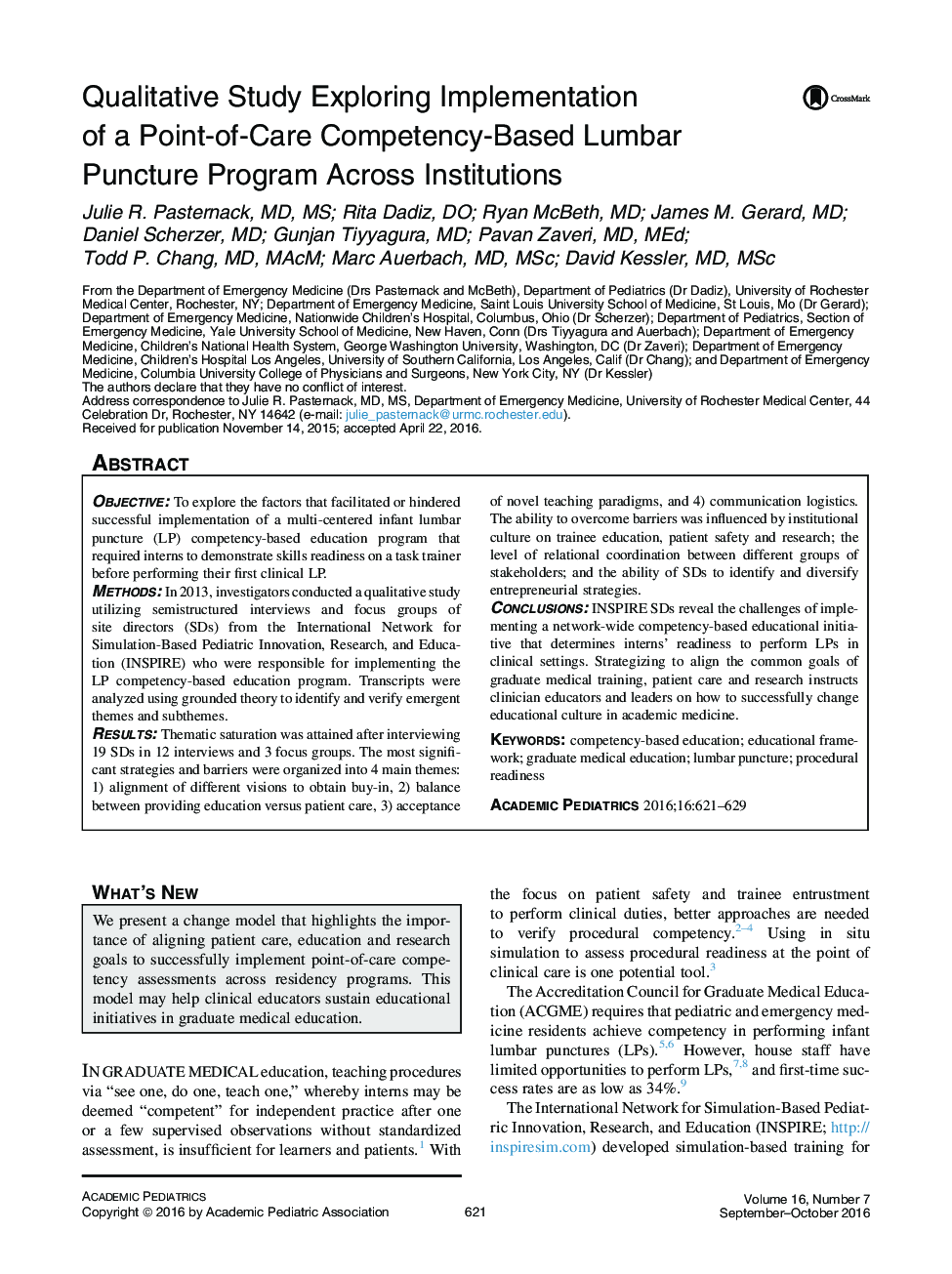| Article ID | Journal | Published Year | Pages | File Type |
|---|---|---|---|---|
| 4138839 | Academic Pediatrics | 2016 | 9 Pages |
ObjectiveTo explore the factors that facilitated or hindered successful implementation of a multi-centered infant lumbar puncture (LP) competency-based education program that required interns to demonstrate skills readiness on a task trainer before performing their first clinical LP.MethodsIn 2013, investigators conducted a qualitative study utilizing semistructured interviews and focus groups of site directors (SDs) from the International Network for Simulation-Based Pediatric Innovation, Research, and Education (INSPIRE) who were responsible for implementing the LP competency-based education program. Transcripts were analyzed using grounded theory to identify and verify emergent themes and subthemes.ResultsThematic saturation was attained after interviewing 19 SDs in 12 interviews and 3 focus groups. The most significant strategies and barriers were organized into 4 main themes: 1) alignment of different visions to obtain buy-in, 2) balance between providing education versus patient care, 3) acceptance of novel teaching paradigms, and 4) communication logistics. The ability to overcome barriers was influenced by institutional culture on trainee education, patient safety and research; the level of relational coordination between different groups of stakeholders; and the ability of SDs to identify and diversify entrepreneurial strategies.ConclusionsINSPIRE SDs reveal the challenges of implementing a network-wide competency-based educational initiative that determines interns' readiness to perform LPs in clinical settings. Strategizing to align the common goals of graduate medical training, patient care and research instructs clinician educators and leaders on how to successfully change educational culture in academic medicine.
